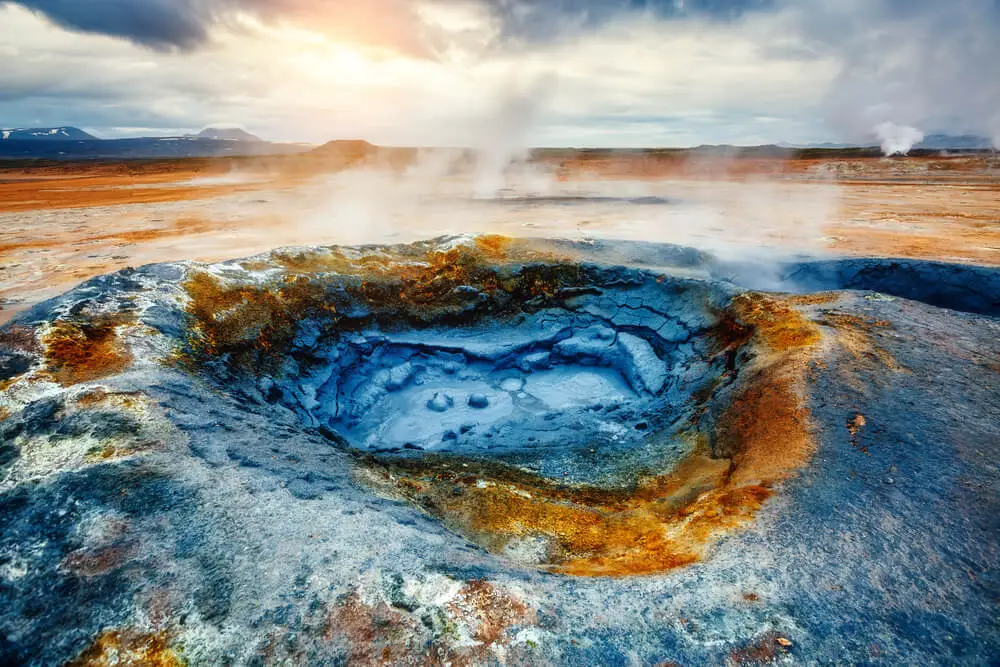Iceland Travel Guide for 2025: Where To Visit & What To Know Before You Go
Explore Iceland’s epic waterfalls, volcanoes, and Northern Lights in this Iceland Travel Guide with tips on when to visit, what to see, and how to plan your trip.

This Iceland Travel Guide will highlight everything you need to know before you go.
Floating in the North Atlantic between Greenland and Europe, Iceland is a land of volcanoes, lava fields, hot springs, glaciers, and waterfalls at every turn. Despite its small population, Iceland packs in some of the most dramatic landscapes you’ll ever see.
Whether you're chasing the Northern Lights, road-tripping the Ring Road, relaxing in geothermal spas, or hiking under the midnight sun — Iceland offers adventure all year long.
Not A Member? ✈️
Save Up To 95% On Flights With Our Airline Mistake Fare & Flash Sales Alerts
What Currency is Used in Iceland?
Iceland uses the Icelandic Króna (ISK).
- $1 USD = roughly 135–145 ISK
- Credit cards are accepted everywhere — including gas stations, restaurants, and even food trucks
- ATMs are common, but most travelers never need cash
What Language is Spoken in Iceland?
The official language is Icelandic — an ancient Nordic language.
- English is spoken fluently by nearly everyone
- Menus, signs, and websites are almost always bilingual
- Icelanders are very used to international visitors
Is Iceland Safe for Travelers?
Yes — Iceland is one of the safest countries in the world.
- Crime is extremely low
- Natural dangers (weather, cliffs, rivers, geothermal areas) are more of a risk — always follow signs and stay on marked paths
- Emergency services are well-organized and accessible throughout the country
Is Iceland Expensive to Visit?
Yes — Iceland is one of the most expensive countries to travel in, but there are ways to manage costs.
- Accommodation: Hostels and guesthouses start at $50–$80 per night; mid-range hotels average $150–$250
- Food: Restaurant meals cost $20–$40 per person; hot dogs and gas station sandwiches are popular cheap eats
- Transport: Renting a car is the best option and can cost $60–$120/day (plus gas, which is pricey)
- Attractions: Most natural sites (waterfalls, hot springs, hiking) are completely free
💡 While prices are high, many of Iceland’s best attractions — waterfalls, mountains, beaches — cost nothing to visit.
Top Places to Visit in Iceland
Iceland is best explored as a road trip. The Ring Road (Route 1) circles the country and hits most of its highlights. Here are the most popular destinations, including national parks, towns, and natural landmarks.
Reykjavík
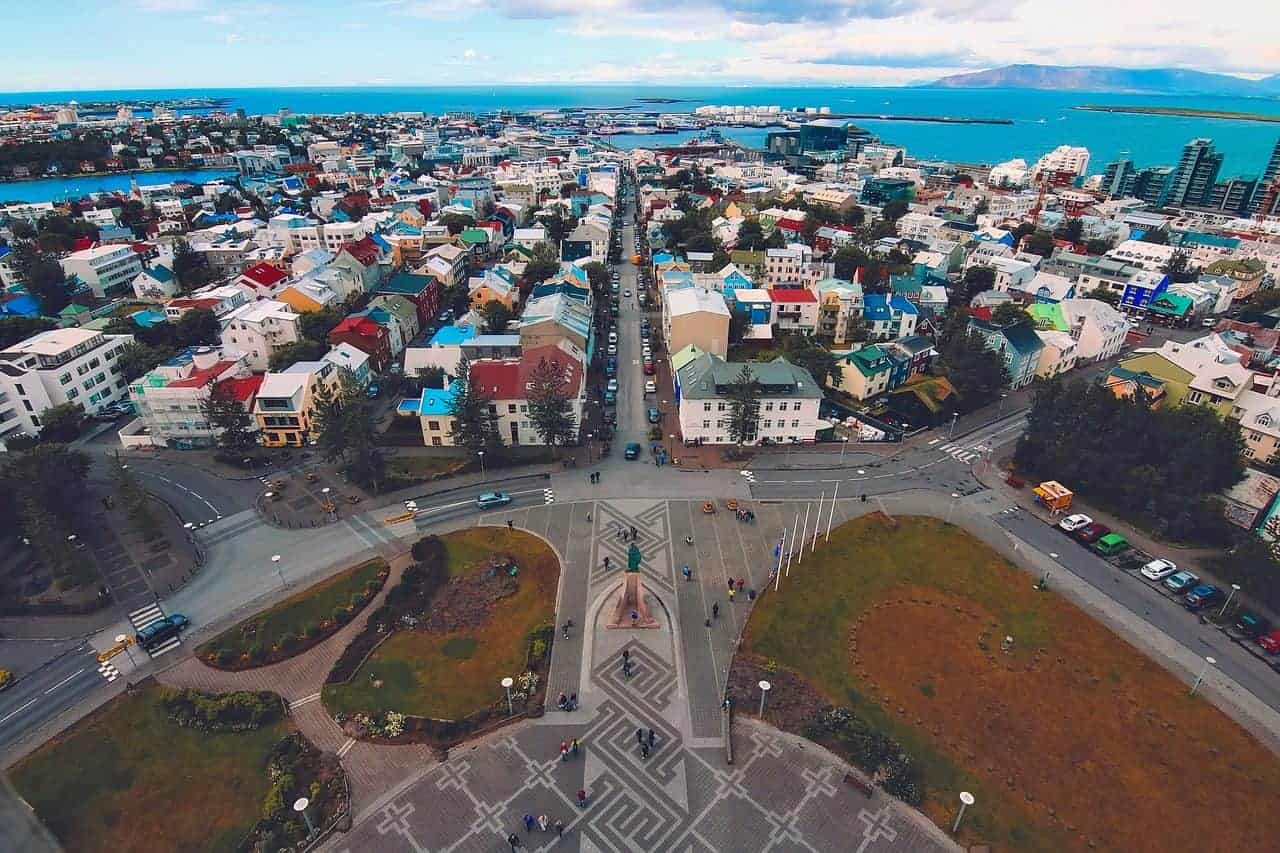
Color‑splashed corrugated houses, mountain reflections in Faxaflói Bay, and the faint smell of geothermal steam—Reykjavík may be a capital city, yet it still feels like a seaside town you can cover on foot. Start your wander along Laugavegur, where record shops, indie cafés, and mural‑covered alleys spill into one another; then drift down to the harbor for cinnamon‑sugar kleina doughnuts and salty air straight off the North Atlantic.
Overhead, the rocket‑shaped Hallgrímskirkja crowns the skyline—ride the elevator for a panorama that sweeps from Esja’s snow‑dusted slopes to the shimmering glass facets of Harpa Concert Hall. Along the waterfront, pause at the Sun Voyager sculpture—its stainless‑steel curves glowing pink under midnight‑sun skies or casting long shadows in December twilight.
Geothermal culture is a daily ritual here. Locals swap news soaking shoulder‑deep at Sundhöllin (hot thermal pool) and linger into the evening at the oceanside Sky Lagoon, where hot seawater meets cold sea air in one steaming infinity edge. If you crave fresh air, hop on a whale‑watching boat, pedal the seawall bike path, or join locals for a weekend hike up Mount Esja—just across the bay yet worlds away.
Between late September and March, Reykjavík doubles as an aurora base camp—you can sometimes catch the green curtain from the harbor if solar activity plays along. Come June and July, concerts spill onto sunlit patios long past midnight, and food trucks plate up langoustine rolls until the last guitar chord fades. Year‑round, the city’s arts scene, micro‑roasters, and forward‑thinking restaurants make it a welcome landing pad before or after your Icelandic road trip.
Reykjavík Top Highlights
- Hallgrímskirkja church tower views
- Harpa Concert Hall’s kaleidoscopic glass façade
- Sun Voyager sculpture on the waterfront path
- Laugavegur shopping, street art, and cafés
- Geothermal swims at Sundhöllin & Sky Lagoon
- Whale‑watching and puffin cruises from the Old Harbor
- Esja hiking trails for a quick city escape
Nearby Nature
- Blue Lagoon — Geothermal spa near the airport
- Reykjanes Peninsula — Volcanic craters and dramatic coastlines
- Þingvellir National Park — Rift valley where two continents meet (part of the Golden Circle)
Golden Circle
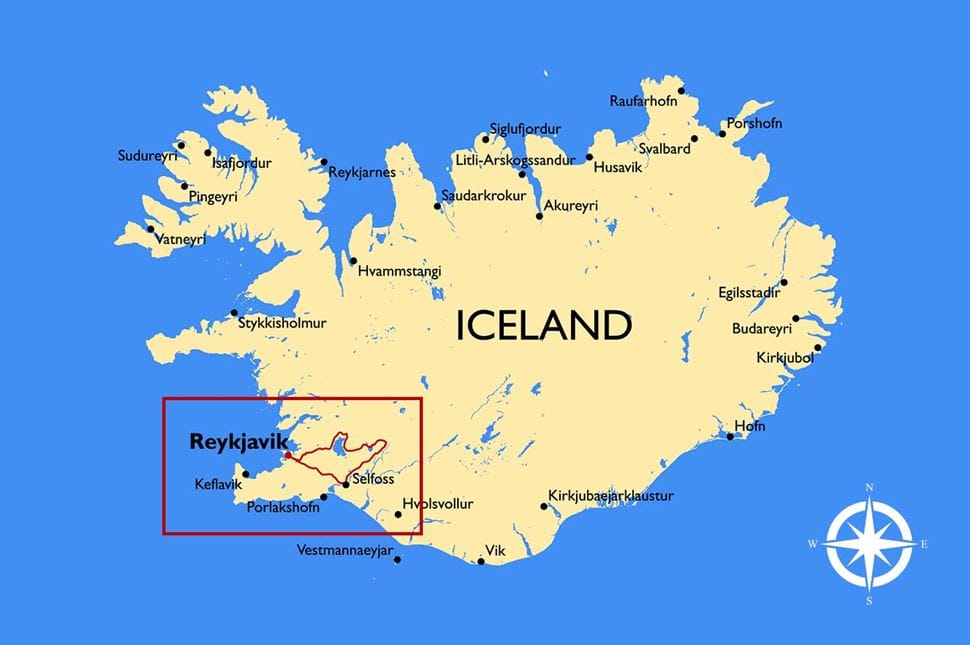
Nicknamed “Iceland’s Greatest Day‑Trip,” the Golden Circle loops east from Reykjavík—packing national‑park history, roaring waterfalls, and exploding geysers into a 185‑mile (300‑km) circuit that’s easy to self‑drive or hop on a tour.
First stop: Þingvellir National Park, where the Mid‑Atlantic Ridge splits the earth and Vikings formed the world’s oldest parliament back in 930 AD. Walk between shifting tectonic plates, peer into the glass‑clear Silfra fissure, or just soak up the Icelandic sagas that echo through this rugged valley.
Next up, the Geysir Geothermal Area keeps cameras ready. While its namesake vent rarely erupts today, nearby Strokkur rockets scalding water 5–10 minutes—sending steamy blue domes sky‑high and drenching onlookers in sulfur‑tinged mist.
Just ten minutes down the road, the two‑tiered Gullfoss Waterfall thunders into a canyon so deep it feels like the ground swallowed the river whole. On sunny days, spray‑born rainbows arc over the brink—one of Iceland’s most photogenic moments.
Got extra time? Swing by the jade‑ringed Kerið Crater, take a dip in the steamy Secret Lagoon at Flúðir, or sample tomato soup inside the geothermal greenhouses at Friðheimar—all easy add‑ons that stretch the Golden Circle into a leisurely full‑day adventure.
Golden Circle Top Highlights
- Þingvellir National Park & Mid‑Atlantic tectonic rift
- Strokkur eruptions in the Geysir Geothermal Area
- Gullfoss Waterfall’s double cascade & rainbows
- Kerið volcanic crater lake (optional detour)
- Secret Lagoon hot‑spring bathing in Flúðir
- Friðheimar greenhouse lunch & horse show (seasonal)
South Coast (Route 1)
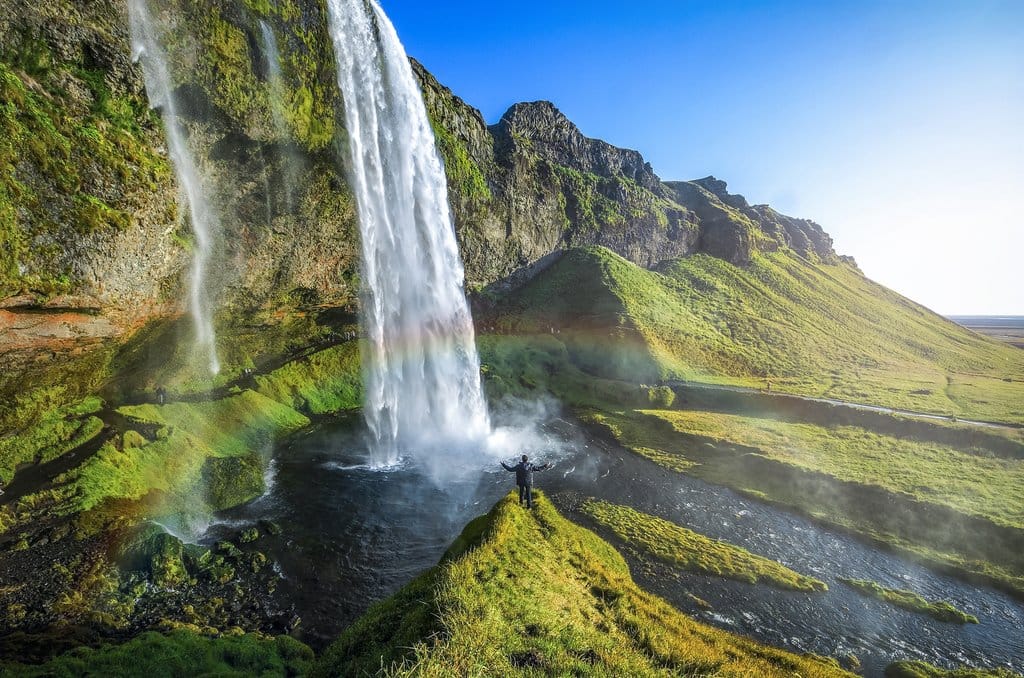
Skimming the southern edge of Iceland between Reykjavík and Höfn, the South Coast (Route 1) delivers one jaw‑dropping sight after another—glacier tongues, moss‑cloaked lava fields, and waterfalls you can walk behind, all lined up along a single, easy‑to‑drive highway.
Kick things off at Seljalandsfoss, where a misty footpath loops behind the cascade, then roll on to powerhouse Skógafoss—spraying rainbows on sunny days. Just ahead, black‑sand Reynisfjara Beach and the sea‑arch headland of Dyrhólaey pair crashing surf with up‑close puffin perches in summer.
Beyond the village of Vík, the landscape opens into glacier country. Strap on crampons for a guided march across Sólheimajökull or detour into Fjaðrárgljúfur Canyon, a serpentine green gorge that looks straight out of a fantasy film. Farther east, Skaftafell in Vatnajökull National Park serves up the short hike to Svartifoss—famous for its dark basalt organ‑pipe columns.
Save time for the big finale: the iceberg‑studded Jökulsárlón Glacier Lagoon and neighboring Diamond Beach, where crystal‑clear ice chunks sparkle against midnight‑black sand—especially photogenic at sunrise and under winter auroras.
South Coast Top Highlights
- Seljalandsfoss walk‑behind waterfall
- Thunderous Skógafoss & Skógar Museum
- Reynisfjara black‑sand beach & Dyrhólaey puffin cliffs
- Glacier hike on Sólheimajökull
- Fjaðrárgljúfur slot canyon viewpoints
- Svartifoss in Skaftafell (Vatnajökull NP)
- Vatnajökull Glacier, Jökulsárlón Glacier Lagoon & Diamond Beach
Short drive, huge payoff—making Iceland’s South Coast a must‑see stretch whether you’ve got a single day or a slow‑paced week.
National Park
- Vatnajökull National Park — Home to Europe’s largest glacier, volcanoes, and icy hiking trails
East Fjords
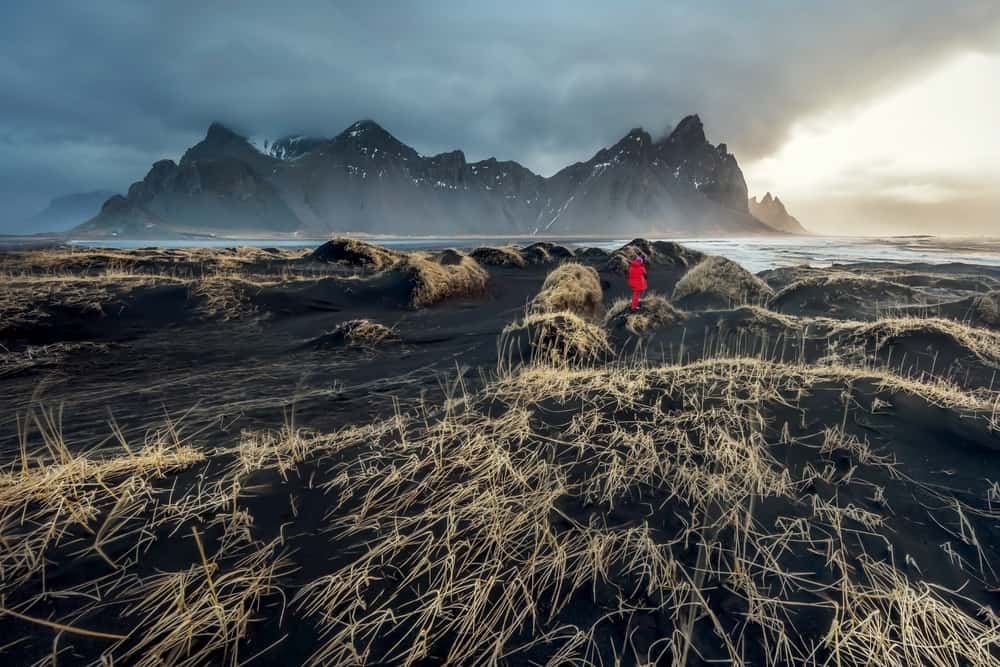
Hemmed in by steep mountains and twisting coastal roads, the East Fjords feel like Iceland’s secret side—where tiny harbors, roaming reindeer, and mirror‑calm inlets pop up around every bend. Most travelers start in Egilsstaðir, the region’s gateway, then meander south past turf‑roofed farmsteads and splash‑y red roofs that look straight out of a storybook.
Art‑loving Seyðisfjörður charms with its rainbow‑painted lane leading to a blue‑wooden church, while Borgarfjörður Eystri delivers puffin watching so close you’ll swear the birds are posing for selfies. Hikers lace up for the Víknaslóðir trail network—dramatic cliff paths that rarely see crowds—while crystal‑striped Hengifoss waterfall and floating geothermal pools at Vök Baths offer perfect wind‑down spots on either side of Lake Lagarfljót.
Push on to postcard‑quiet Mjóifjörður for the one‑lane ride you’ll brag about later, detouring for Petra’s legendary stone collection in Stöðvarfjörður. With long summer light and winter’s streaking auroras—plus seafood straight off the boat—the East Fjords reward anyone willing to slow down and follow the coast.
East Fjords Top Highlights
- Seyðisfjörður’s rainbow street & cafés
- Puffin colony at Borgarfjörður Eystri’s Hafnarhólmi
- Víknaslóðir coastal hiking routes
- Hengifoss & Litlanesfoss waterfalls
- Reindeer spotting near Egilsstaðir
- Vök Baths floating hot‑spring pools
- Remote drive into Mjóifjörður and Klifbrekku foss
North Iceland & Akureyri

Driving the Ring Road past lunar lava fields and steaming valleys, North Iceland opens up like a natural playground—anchored by the friendly port town of Akureyri, often called Iceland’s “Capital of the North.” Cafés spill onto the compact waterfront, the hill‑top church keeps watch, and in summer the city’s Arctic Botanical Garden flourishes under near‑24‑hour daylight.
Just outside town, Goðafoss roars across a basalt horseshoe—earning its nickname “Waterfall of the Gods.” Follow the Diamond Circle west to Lake Mývatn, where pseudocraters, hot‑spring mud pots, and the Mývatn Nature Baths create a geothermal wonderland with far thinner crowds than the Blue Lagoon. Continue to Húsavík—famous for near‑guaranteed whale‑watching—or detour to thunderous Dettifoss, reputed to be Europe’s most powerful cascade.
Winter flips the script: Akureyri’s Hlíðarfjall ski area offers groomed runs until late April, and dark skies mean prime Northern Lights viewing between September and March—often right from town. Add hip microbreweries, day‑trip horseback rides through volcanic plains, and the quiet fishing villages along the Arctic Coast Way, and North Iceland becomes a choose‑your‑own adventure—without Ring Road traffic.
North Iceland & Akureyri Top Highlights
- Akureyri cafés, church, and botanical garden
- Goðafoss waterfall spectacles
- Lake Mývatn geothermal landscapes & Nature Baths
- Whale‑watching cruises from Húsavík
- Dettifoss & Ásbyrgi Canyon along the Diamond Circle
- Hlíðarfjall skiing and winter Northern Lights hunts
Nearby Nature
- Ásbyrgi Canyon — Horseshoe-shaped canyon ideal for hiking
- Krafla Caldera — Active volcanic area with steaming vents and mud pots
Westfjords
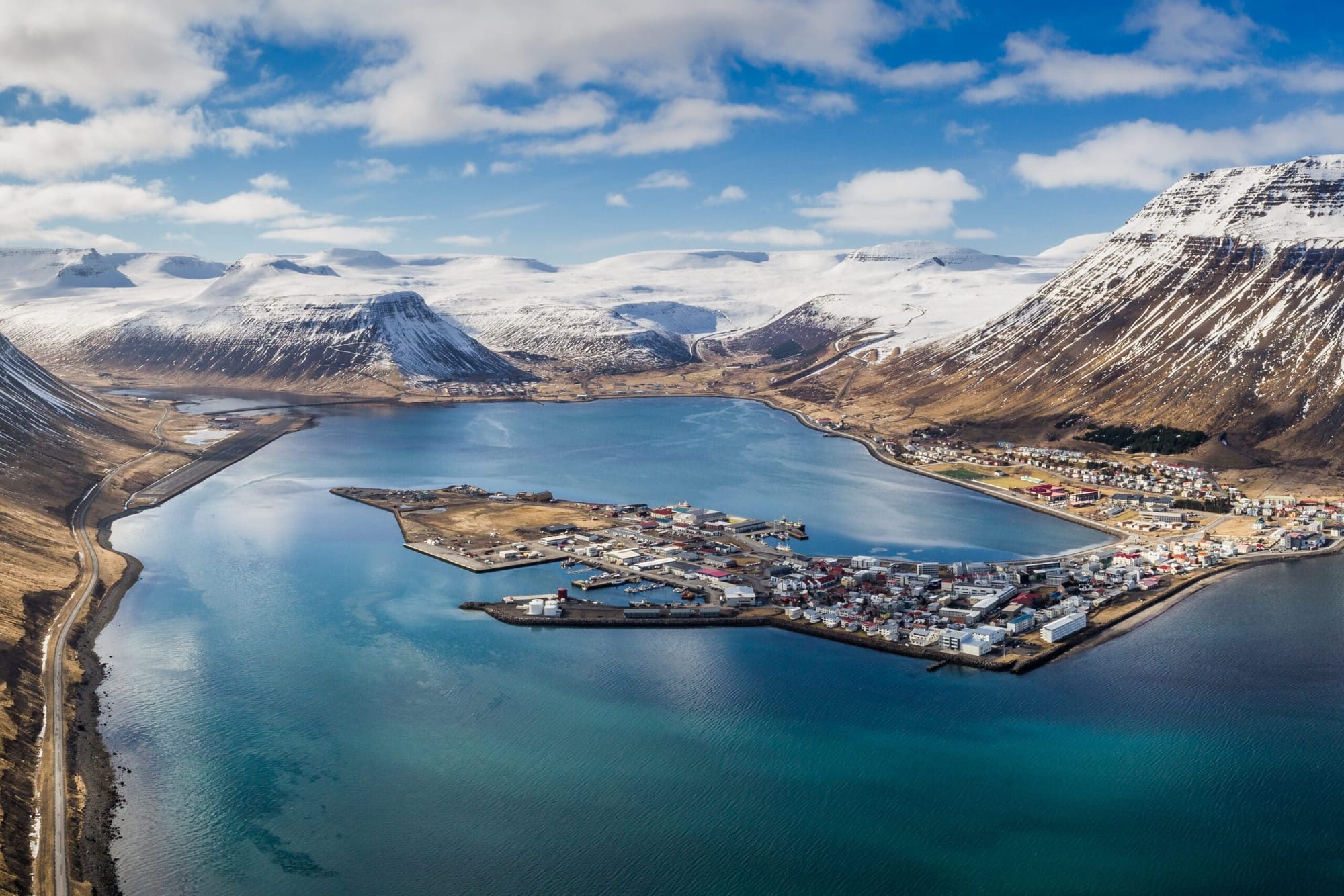
Jutting like a jagged claw into the Denmark Strait, the Westfjords sit far from Iceland’s busy Ring Road—so getting here means following gravel ribbons that trace mirror‑still fjords below snow‑streaked peaks. The remoteness is half the thrill.
Base yourself in Ísafjörður, the region’s unofficial hub, for cozy cafés and kayak outings among glassy inlets. From town, day‑trip to Dynjandi—a 100‑meter waterfall that fans out like a bridal veil and thunders into the valley below.
Further west, the bird‑splattered cliffs of Látrabjarg let you eyeball puffins at arm’s length. Afterward, slide into shoreline hot pools such as Hellulaug or seaside Krossneslaug—soaking as Atlantic swells roll in.
Keep watch for Arctic foxes around Súðavík’s research center, and if you visit in June or July, chase the midnight sun along empty black‑sand beaches that glow long past “bedtime.” Add it all up and the Westfjords become Iceland’s ultimate detour for travelers craving solitude, wildlife, and big‑sky scenery—without the tour‑bus crowds.
Westfjords Top Highlights
- Ísafjörður cafés & kayaking
- Dynjandi waterfall
- Látrabjarg puffin cliffs
- Hellulaug & Krossneslaug hot pools
- Arctic fox encounters in Súðavík
- Midnight‑sun beaches
National Park
- Hornstrandir Nature Reserve — No roads, no towns — only hiking trails, Arctic foxes, and untouched coastline
Snæfellsnes Peninsula
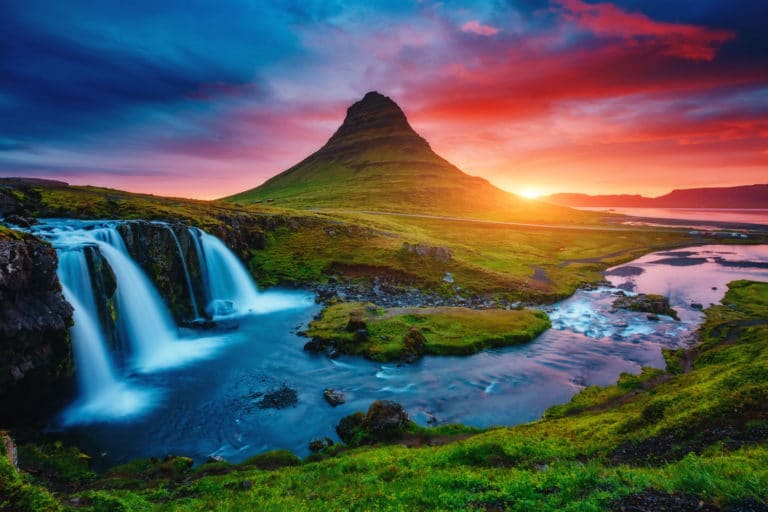
Often called “Iceland in Miniature,” the Snæfellsnes Peninsula squeezes glaciers, lava fields, fishing towns, and golden beaches into a two‑hour drive from Reykjavík—making it an easy add‑on to any Ring Road itinerary.
At the western tip, Snæfellsjökull National Park fans out around an ice‑capped stratovolcano that inspired Journey to the Center of the Earth. Hike short craters, duck into Vatnshellir lava tube, or simply pull over for views that run from surf to summit in a single glance.
Loop clockwise to photogenic Kirkjufell—a shark‑fin mountain mirrored by twin waterfalls—then coast past the basalt arches of Arnarstapi and black‑pebble Djúpalónssandur beach. Keep eyes peeled at Ytri‑Tunga where curious seals sprawl on honey‑colored sand.
Summer brings midnight‑sun road trips; winter rewards patient travelers with aurora pulses over the glacier. Either way, bakeries in Stykkishólmur and geothermal pools in Lýsuhólslaug guarantee warm pit stops between view points.
Snæfellsnes Peninsula Top Highlights
- Snæfellsjökull National Park & glacier hikes
- Kirkjufell mountain and Kirkjufellsfoss
- Arnarstapi sea cliffs & Gatklettur arch
- Djúpalónssandur “black lava pearl” beach
- Seal spotting at Ytri‑Tunga
- Stykkishólmur harbor cafés & Sea Monster Museum
National Park
- Snæfellsjökull National Park — Glaciers, caves, beaches, and sea stacks
Westman Islands (Vestmannaeyjar)
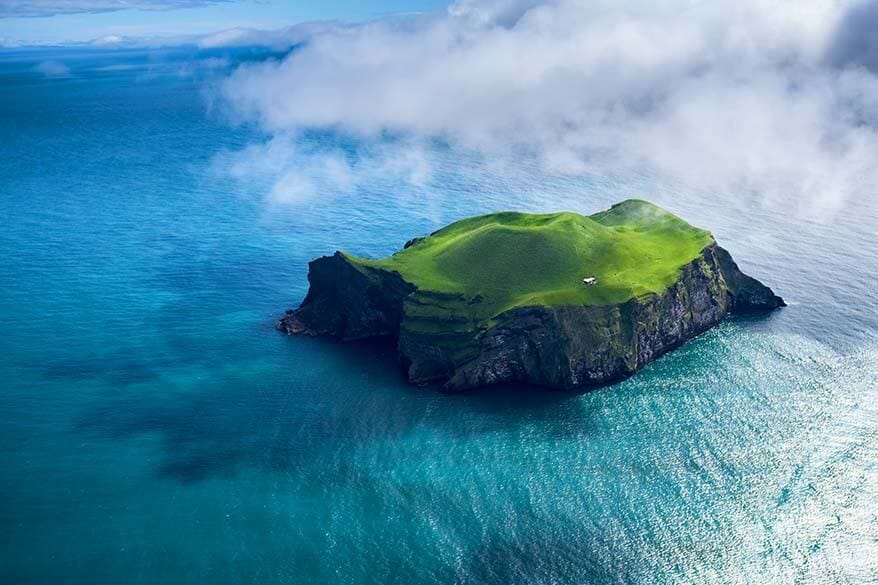
Rising dramatically from the North Atlantic just off Iceland’s south coast, the Westman Islands (Vestmannaeyjar)—an archipelago—feel like a mini adventure all their own. Reach them via a quick ferry from Landeyjahöfn or a short flight from Reykjavík.
Heimaey, the only inhabited island, blends small‑town charm with raw geological power. Hike Eldfell volcano, whose 1973 eruption enlarged the island and now frames sweeping ocean views.
Summer lures puffin lovers to one of the world’s largest colonies, while boat tours glide beneath towering basalt cliffs and slip into hidden sea caves.
Cap off your visit with the Beluga Whale Sanctuary, seafood hauled in that very morning, and a cliff‑top golf course that plays to a soundtrack of seabirds and surf—making Vestmannaeyjar one of Iceland’s most surprising day‑trip (or overnight) destinations.
Westman Islands Highlights
- Heimaey Island
- Eldfell Volcano hike (formed in 1973)
- Boat tours and sea caves
- Puffins (May–August)
Iceland's Monthly Daylight Hours
Here’s a quick month‑by‑month look at how many hours of daylight you can expect in Reykjavík (the numbers are close enough for most places you’ll visit in Iceland, but the farther north you go—say, Akureyri or Grímsey—you’ll squeeze out a little extra light in summer and lose a bit more in winter.
- January — about 5 h 35 m of daylight
- February — 8 h 46 m
- March — 11 h 49 m
- April — 15 h 12 m
- May — 18 h 34 m
- June — 21 h 17 m (the famous midnight‑sun stretch)
- July — 19 h 51 m
- August — 16 h 29 m
- September — 13 h 07 m
- October — 9 h 54 m
- November — 6 h 36 m
- December — 4 h 23 m Worlddata.info
A few handy takeaways:
- Late May through late July is essentially a 24‑hour golden hour—perfect for all‑night road‑trips or squeezing extra waterfall stops into the itinerary.
- In deep winter (late November to mid‑January), daylight is short and sweet. Plan outdoor adventures for the middle of the day, then lean into cozy cafés, hot springs, and—if the sky cooperates—northern‑lights hunting after dark.
- Shoulder months (March–April and September–October) give you a balanced mix: plenty of sightseeing time, but still enough darkness for aurora chasing.
Iceland Travel Seasons at a Glance
Iceland doesn’t exactly “close” for tourism, but prices, daylight, and crowd levels swing enough through the year that most travelers talk about three clear periods: peak season, shoulder season, and the quieter winter stretch.
Peak Season — Mid‑June to Late August
Summer is Iceland’s spotlight moment:
- Long, light‑filled days — the midnight sun lets you sightsee past 11 p.m.
- Almost every tour, ferry, and Highland road operates on a full schedule.
- Hotel rates and camper‑van rentals climb fast, and popular sites like Seljalandsfoss or the Glacier Lagoon feel busy even at odd hours.
- Expect mild temps (50s °F / low 10s °C) and the most reliable weather for multi‑day hikes such as the Laugavegur Trail.
Shoulder Seasons — April to May & September to mid‑October
These “in‑between” months balance daylight with thinner crowds:
- Spring: Roads are mostly clear, waterfalls thunder with snowmelt, and puffins start arriving by late April.
- Autumn: Crisp air, fiery foliage around Þingvellir, and the first chance to spot northern lights without deep‑winter cold.
- Prices dip — rental cars and guesthouses often drop 15–25 percent compared with summer.
- Some rural museums and Highlands routes still stay closed until mid‑June (or shut down by early October), so double‑check opening dates on anything remote.
Winter / Off‑Peak — mid‑October to March
Iceland’s darkest months create a different kind of magic:
- Northern lights headline the show from late August, but winter’s long nights boost your odds.
- Reykjavík cafés feel cozy and festive — Christmas season (late Nov‑early Jan) sees a quick mini‑surge in visitors and prices.
- Daylight bottoms out near the solstice with barely 4‑5 hours of usable light in December. Plan drives and photo stops carefully.
- Budget travelers win big: car rentals, tours, and many hotels can be 30 percent cheaper than in peak season.
- Weather flips fast — storms close roads or cancel tours, so keep itineraries flexible and check vedur.is for daily reports.
Is There a True “Offseason”?
Not anymore — Iceland’s winter tourism has grown thanks to aurora hunters and cheap trans‑Atlantic stopovers. Still, mid‑November to early December and late January to mid‑February feel the quietest. You’ll find:
- Short lines at the Blue Lagoon and Sky Lagoon.
- Plenty of last‑minute room deals outside Reykjavík.
- A good chance to have photogenic spots (think Kirkjufell) almost to yourself at sunrise — just be ready for icy paths.
Quick Takeaways
- Summer: maximum activities & daylight — maximum prices.
- Spring/Fall: milder rates, mixed weather, puffins (spring) or fall colors (autumn).
- Winter: cheapest time, aurora potential, but plan around storms and limited daylight.
Use these windows to match your priorities — whether it’s chasing waterfalls under the midnight sun or sipping hot chocolate after a northern‑lights chase.
When Is the Best Time to Visit Iceland?
- June–August: Midnight sun, mild weather, best for road trips and hiking
- September–October: Fewer crowds, fall colors, start of Northern Lights season
- November–March: Northern Lights, ice caves, snow-covered scenery
- April–May: Shoulder season with decent weather and better prices
My Final Thoughts On Iceland
Iceland is pure natural drama — waterfalls taller than buildings, beaches made of volcanic ash, and geothermal pools overlooking snow-covered mountains. It’s a place that makes you feel small in the best way.
Whether you’re soaking in a hidden hot spring or driving through a moss-covered lava field, Iceland is not just a destination — it’s a once-in-a-lifetime experience waiting at every curve of the road.

